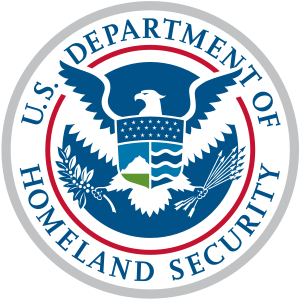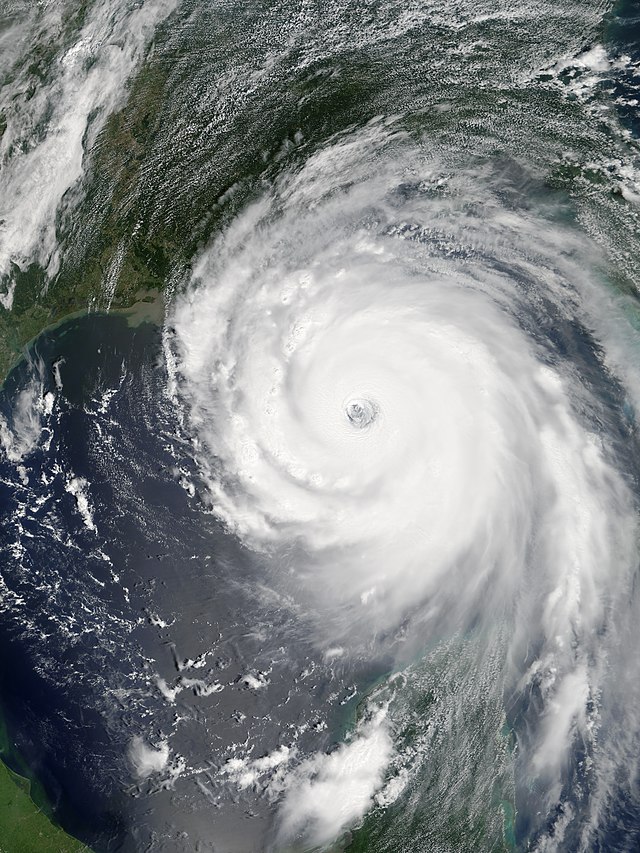10.8 Homeland Security
Brandon Hamann

After 9/11, it became clear that the United States Intelligence apparatus was extremely dysfunctional. Many agencies were investigating aspects of domestic terrorism, border protection, immigration, cybercrime, transnational crimes, human trafficking, drug trafficking, fraud, counterfeiting, and many other threats to National Security, but they weren’t communicating with each other. There were so many different federal departments with overlapping responsibilities that it was becoming difficult to determine who was in charge of doing what. That changed in 2002 with the passing of the Homeland Security Act, which established the Office of Homeland Security. This department took the task of combining 22 autonomous federal agencies and combined them into one singular entity to streamline and coordinate a national strategy to secure the United States against a terrorist attack. Some of the agencies under the Homeland umbrella include:
- United States Customs Service
- Immigration and Naturalization Service
- Federal Emergency Management Agency (FEMA)
- Transportation Security Administration (TSA)
- United States Coast Guard (USCG)
- United States Secret Service
Responsibilities of Homeland Security
With that many agencies under its wing, it’s quite easy to get confused as to the role the department plays in the overall function of securing the nation. some of the jobs that are tasked to Homeland include the following:
- Cyber security and infrastructure
- Immigration and border protection
- Drug and Human Trafficking Investigations
- Money laundering and currency counterfeiting
- Disaster management
- Transportation security (airports, railways, ship docks, etc.)
- Animal and Plant Health Inspections
More recently, as of 2021, a new area of concern has arisen in the fight against Terrorism within the borders of the United States: White Supremacy and extremist actions. The Department of Homeland Security under the Biden Administration has been tasked with investigating this new threat.
Immigration and Border Protection
If you have been paying attention to history at all, you’ll realize that the United States of America is a country built on immigration. Save for the indigenous peoples that were here prior to the colonization by the Europeans, the vast majority of those who call themselves “Americans” can trace their ancestry to somewhere other than here. Regardless of that fact, the issue of immigration today is still a hotly debated topic of discussion as it has always been since the first settlers stepped foot on the shores of this country seeking a better life for themselves and their loved ones.
But we also have to be mindful that while there are those who are seeking refuge and a chance to have a better life for their loved ones than the one they have in their native countries, the United States has laws that must be followed in order to secure those rights and privileges to become a citizen. With threats of international and domestic terrorism, as well as the most recent COVID-19 pandemic, national security pertaining to immigration and border protection have become more focused.
Title 42
COVID-19 took the entire world by storm. No one was prepared for the extent of precautions that were necessary or the sacrifices that were needed in order to try and stave off the rampant rate of infection before the scientific community could develop a reliable means of defense in the form of a vaccine. Government’s were paralyzed as their disaster responses were tragically inadequate and millions died because of misinformation and miscommunication. Those countries that were ill-equipped to amass a defense saw their citizens get infected with ferocity, and their medical services were stretched thin. Even well staffed hospitals were no match for the influx of the sick and dying who needed constant medical care and much needed medicines that were not available.
The pandemic also stressed the situation at the southern border of the United States. Many Central American countries were not able to combat the infection rate of COVID-19, which pushed their citizens into a panic and sent them seeking aid in the only place they knew would be able to help: America. However, many countries, including the United States, issued global travel restrictions, essentially closing their borders for fear of spreading the disease even further.
So in March 2020, under President Trump, the United States issued a decree that any individuals seeking asylum into the United States would be turned away for fear of them possibly transmitting a communicable disease. This new order was termed “Title 42” (Section 265 of U.S. Code Title 42) which gave the Director of the Center for Disease Control permission to expel or suspend the introduction of any person who was suspected of carrying or transmitting a deadly virus or disease from entering the United States from Mexico or Canada. This included any border crossing by land, air, or sea. This policy was kept in place under President Biden until May 2023. To learn more about Title 42 and its impact on border crossings and immigration, read this article.
DACA and The Dreamers
Deferred Action for Childhood Arrivals (DACA) is a policy that allows for children born of immigrant parents or children of immigrant parents brought to the United States illegally permission to remain in the country and obtain certain rights. Originally signed in 2001 under The Dream Act, provisions would be provided for undocumented children to obtain citizenship through such programs as receiving a high school diploma or GED equivalent, military service, or relevant work service. These children were also known as “Dreamers,” for they were the ones who were most impacted by The Dream Act and DACA. Through the years, DACA and The Dream Act have gone through many revisions, including an attempted rescinding during the Trump administration. However, federal courts issued a decree stating that DACA and The Dream Act were both to be kept active.
Immigration and Louisiana
While the United States Supreme Court has continuously ruled that any person within the borders of the country, regardless of residency status, has protections under the Constitution, including Freedoms of Speech, Religion, Privacy, and Due Process under the law, that does not mean that those who are here illegally have the right to work and stay without proper documentation that allows them to do so. There are ways that this can be accomplished, but those processes can sometimes be extremely time consuming and costly. For more information as to the requirements for how an undocumented person can work in the United States, click here.
Many states, including Louisiana, have legislated against companies hiring and employing undocumented persons. Even though, according to research, nearly one-third (28%) of adult immigrants living in Louisiana have a college education, and immigrants make up only 4% of the population, it is still a violation of state law to be an undocumented resident (American Immigration Council, 2020). To read more about immigration in Louisiana, go here.
To familiarize yourself with immigration legislation in the state of Louisiana, visit this site.
Disaster Management

The above image shows the shear size of one of the most devastating natural disasters in recent history, Hurricane Katrina. To the top left is the Western border of Louisiana and Texas. The top right shows the peninsula of the state of Florida. The very bottom middle is the Yucatan peninsula of Mexico. This storm was so big it almost covered the entire Gulf of Mexico before it made landfall in August 2005. With winds peaking at over 175 miles per hour (making it a Category 5 storm), Hurricane Katrina buzz-sawed her way through the states of Louisiana, Mississippi, Alabama, and Florida, leaving a path of devastation in her wake. Damages were estimated at over $160 billion dollars US with thousands of lives lost and the city of New Orleans in near ruin from massive flooding. Homes were lost, families were displaced (some left and never came back), and by some estimations, recovery is still ongoing.
For those of us living in this region of the United States this is nothing new, it’s part of the life. Hurricanes, daily flooding in low-lying areas, rain one minute, scorching heat the next, it’s just another day in the South. But in other parts of the country, life is not the same. Different regions deal with different disaster threats from natural occurrences from Mother Nature: earthquakes, tornados, landslides, drought, blizzards and snowstorms, avalanches, etc. And when those Americans are in need, just like when those who are impacted from the devastation of a major hurricane, there has to be a process in which those victims can be put back whole again. And there is: FEMA.
There is a division of Homeland Security that deals strictly with disaster relief and management, the Federal Emergency Management Agency (FEMA). FEMA is responsible for coordinating relief efforts during disaster recovery from all avenues: local, state, and federal governments, as well as public and private charitable organizations and businesses. The goal is to streamline the process and make it easier for those affected by a natural disaster to be able to recover and get back to a relatively normal way of life as quickly as possible by providing as much assistance as possible. The assistance provided can include temporary housing, food, clothing, transportation, loss of income, and other necessities as needed.
Deferred Action for Childhood Arrivals; a means for obtaining citizenship for undocumented children of immigrants.
Federal Emergency Management Agency

